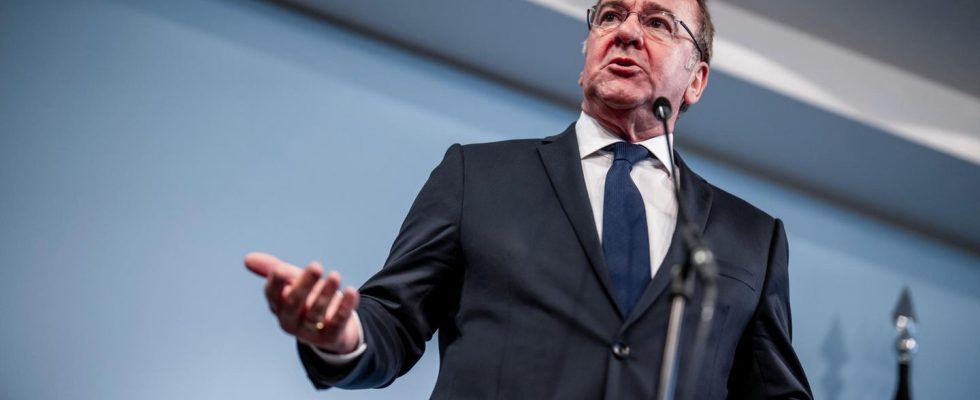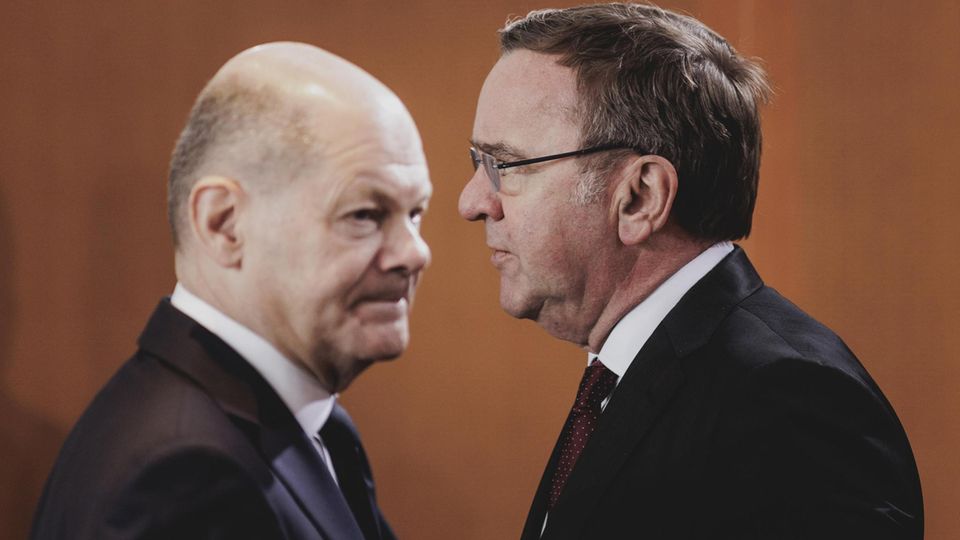The Bundeswehr should be war-ready and efficient. Defense Minister Pistorius’s structural reform alone is unlikely to achieve this.
Boris Pistorius seems satisfied. The rows of chairs in front of him are completely occupied. Quite appropriate, says the Defense Minister, who is otherwise not prone to modesty on this Thursday morning. Right?
“Today I can introduce you to what the Bundeswehr will look like at the turn of the century,” Pistorius tells the assembled press with full conviction. Sitting still, eyes straight ahead: This is our direction of travel – this is the message that should come from the podium.
It is also a significant day for Pistorius. Not just because the NATO defense alliance is celebrating its 75th birthday today. The coincidence of the dates is certainly just a coincidence. For the Defense Minister, it is also about his image as a minister with a can-do mentality and his personal balance. Can he deliver? The expectations are high. And if you listen to Pistorius, success is even decisive for the war.
With the Russian attack on Ukraine, the threat situation has changed, including for Germany. Pistorius is responding with an ambitious structural reform of the armed forces. He wants to create a “war-ready” force that is optimally positioned for defense. He sometimes scares away his peace-loving comrades with the word “war-fighting”, but Pistorius pursues a different goal: “Nobody should come up with the idea of attacking us,” says the defense minister.
That’s why the troops should become more powerful, including in terms of organization. In the future, a unified operational command will ensure leadership from a single source and faster decisions. In addition, the Bundeswehr will be reorganized into four branches of the armed forces (land, air and space, sea and, more recently, cyber and information space) with a joint support command (including medical services and logistics). Less is more, more flexible and more efficient – that’s the idea. Does it open?

Restructuring of the Bundeswehr: Planned structure of the military sector of the Bundeswehr
© stern/rös; DPA infographic; Source: Ministry of Defense
There have been extremely intensive discussions over the past five months, says Pistorius. Due to the slimmed down structures, some staff positions in the bloated Bendler block are likely to be eliminated, but he cannot give any figures yet. Nevertheless, Pistorius is certain that criticism, not least from his own company, will not stop in the coming months. Otherwise it wouldn’t be a reform, says the minister. “You have to rub yourself against that too”.
After all, the defense minister is trying to rebuild an unruly, lumbering giant. Annegret Kramp-Karrenbauer, his predecessor, wanted to modernize the armed forces, slim down structures and strengthen the troops. Under the influence of the Ukraine war, Kramp-Karrenbauer’s “Key points for the Bundeswehr of the future” (2021) were subjected to a “critical inventory” by her equally unfortunate successor Christine Lambrecht (2022).
Now Pistorius wants to set up the “Bundeswehr of the turning point”. He says he gave the armed forces six months to make the adjustments. This may provide an update to the Bundeswehr structure, but it does not solve every problem faced by the popular minister.
Boris Pistorius’s many construction sites
Lower Saxony’s former interior minister came into office “really keen” to join the Bendlerblock, something his many visits to the troops left little doubt about. Even the opposition praises the fact that Pistorius made a successful start – despite the cold start. Quick to analyze problems and clear in naming them. His often pithy statements and his shirt-sleeved appearance promptly made him the most popular politician in the country.
His record so far, after almost 13 months in office, falls short of the high expectations, especially since the Bundeswehr has been criminally neglected in recent years. Shortages of ammunition and spare parts, the growing need for large equipment – these problems have been known for a long time. As a result, the domestic arms industry should also be ramped up again. Ukraine’s support does not make the undertaking any less urgent.
Sure, Pistorius has already achieved a lot. Procurement, for example, has picked up speed and a large part of the 100 billion special fund for the Bundeswehr is already contractually bound. That is the good news. The bad news: money is running out.
Pistorius estimates an additional need of up to six and a half billion euros for the 2025 budget year in order to keep operations running and meet NATO’s two percent target. “Good structures are of little use if money, staff and equipment are not there,” admits Pistorius.
The unclear funding in particular puts a question mark on any ambitions in the Ministry of Defense. If Germany wants to invest at least two percent of its economic output in defense every year, as the federal government has assured several times, Pistorius’ regular budget would probably have to double from 2028. By then at the latest, the special 100 billion that Chancellor Olaf Scholz provided to the Bundeswehr after the Russian attack on Ukraine will probably have been exhausted.
Although everyone in the traffic light government agrees on the common goal, they do not agree on the path. Another special fund? A reform of the debt brake? Savings in other departments? Tough distribution battles are emerging. Pistorius only says this much: Germany will have to fulfill the NATO goal in the coming years in order to be able to fulfill its role. It sounds a bit perplexing.
Last but not least, the Bundeswehr has a problem with its “growth ability,” as it is called in military jargon. In other words: The “Bundeswehr of the turn of the century” does not have enough people. The stated goal is for the force to grow to 203,000 soldiers by 2031. This landmark should remain, says Pistorius. The numbers have recently been declining and have fallen to 181,000 soldiers.
That’s why Pistorius has been loudly drumming for the reintroduction of a conscription model for months. Pistorius emphasizes that “intensive work” will continue on this, although he will not be able to present any results this Thursday. A paper should be created in his house by mid-April in which different models would be compared and their feasibility checked. “Then the discussion process will show where we come out,” said the minister. Because no matter what Pistorius wants, his cabinet colleagues and parliament must also want it, and in the case of a change to the Basic Law, even the opposition and the Federal Council.
Is the “Bundeswehr of the turning point” initially just a slogan? Pistorius wants this Thursday to be seen as a “signal of departure”. As a groundbreaking reform with a view to national and alliance defense. That is their purpose, according to Pistorius. It is not an end in itself.



